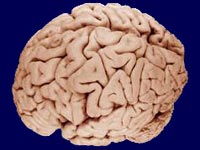Attention-deficit hyperactivity disorder is the most common developmental disorder in children, affecting anywhere between 3-5% of the world’s school-going population. As the name suggests, kids with ADHD are hyperactive and easily distracted; they are also forgetful and find it difficult to control their own impulses.

While some evidence has suggested that ADHD brains develop in fundamentally different ways to typical ones, other results have argued that they are just the result of a delay in the normal timetable for development.
Now, Philip Shaw, Judith Rapaport and others from the National Institute of Mental Health have found new evidence to support the second theory. When some parts of the brain stick to their normal timetable for development, while others lag behind, ADHD is the result.
The idea isn’t new; earlier studies have found that children with ADHD have similar brain activity to slightly younger children without the condition. Rapaport’s own group had previously found that the brain’s four lobes developed in very much the same way, regardless of whether children had ADHD or not.
But looking at the size of entire lobes is a blunt measure that, at best, provides a rough overview. To get an sharper picture, they used magnetic resonance imaging to measure the brains of 447 children of different ages, often at more than one point in time.
Filed under: Child development, Children's health, Health & Medicine, Mind and Brain, Neuroscience, The Brain | Tagged: , ADHD, attention-deficit hyperactivity disorder, brain development, cerebral cortex, Child development, developmental disorders, mental disorders, mental health | 9 Comments »










